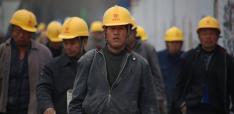What Would It Take for China to Be a Global Environmental Leader?

Thomas Hale and Yixian Sun call for serious research and dialogue to make China to a global environmental leader.
What would it take for China to be an international environmental leader? The question worth asking—not just because China’s footprint on our shared planet is second to none, but because the shifting geopolitical landscape demands it.
The United States’ oscillation between ambition and abdication on climate, the limits of the EU to do more than lead by example, and the limited interest and capacity of emerging economies like Brazil or India, all mean that global progress hinges, to an unusual degree, on what happens in Beijing.
What do we mean by “leadership”? A useful definition comes from political theorist Nannerl Keohane: leadership is the ability to help a group articulate its goals and to work toward achieving them. Can China play that role for global sustainability transition? The question decomposes into three interconnected questions:
- Does the Chinese government want to be an environmental leader?
- Can China successfully transform its own economy to align with planetary boundaries?
- Can China shift others toward stronger environmental action?
The answer to all three questions is partly yes and partly no. Taken together, they suggest that China can be an environmental leader. It will, however, require a great deal more ambition, strategic rethinking, and institutional innovation.
Does China Want to Be an Environmental Leader?
The short answer: yes—but not quite in the way the planet needs.
At the domestic level, China clearly wants a cleaner environment. Public support for environmental protection is strong. Air pollution remains a daily concern in many urban areas, and the government is acutely aware that environmental degradation is a direct threat to political legitimacy and social stability. More than rhetoric, China has institutionalized a substantial policy apparatus around environmental governance. Terms like “ecological civilization” are not mere slogans—they signal a relatively stable policy orientation that is visible across institutions like the National Development and Reform Commission and the People’s Bank of China.
But does China want to lead? Here the answer is more nuanced. In terms of innovation, certainly. China sees technological advancement—particularly in clean energy—as a source of national pride and geopolitical strength. But in other dimensions of leadership—being more ambitious than others, accepting historical responsibility, or working to influence others—China’s posture is cautious. It shies away from the kind of moral or normative leadership that others might expect from the world's largest emitter. In Chinese political terminology, we might say that China does not aspire to be a “lingdao” (leader), but rather a “yinlingzhe”—a torchbearer or pathfinder. It prefers to lead by example and technology, not by exhortation.
Can China Truly Green Its Own Economy?
In many ways, China is already on track to deliver the easy half of the energy transition. But the harder, messier half is still to come.
On the positive side, the so-called “new three” or xin san yang—renewables, batteries, and electric vehicles—have achieved remarkable growth. According to Ember, China added 278 GW of solar and 79.8 GW of wind capacity in 2024 alone. This puts total clean electricity capacity at over 1,400 GW, six years ahead of the 2030 target. More impressively, this growth is now meeting over 80% of new electricity demand. If this trajectory continues, renewables could meet all new demand by the end of the decade.
This economic success story has important political effects. These new sectors contributed over a quarter of China’s economic growth last year – accounting for above 10% of the country’s total GDP, meaning they have become, in political terms, too big to fail.
But that’s only half the picture. Coal consumption has fallen as a percentage of the energy mix, but has grown in absolute terms. Ultimately, the climate only cares about the latter. China’s growing energy demand has allowed it to expand renewables while continuing to build out coal to ensure energy security. A growing economic pie allows governments to avoid hard political choices—but those choices are looming. As energy demand growth slows and renewables continue to boom, the Chinese government will inevitably have to choose: how much of the pie goes to clean or dirty electrons, and the companies, workers, and communities that depend on them?
That’s where things get tricky. There is currently no clear plan for a “just transition” in China—no roadmap for how to wind down coal while supporting affected communities. Countries like Germany and Spain invested heavily in compensating companies, workers, and communities to phase coal down and out. In China, such a strategy remains politically and institutionally underdeveloped. Without it, the risk is that China’s energy transition hits a wall in the coming years.
This problem is a microcosm of a broader economic challenge. China has long aimed to move away from investment- and export-led growth toward consumption and innovation. Yet in practice, the state has struggled to let go of old models. Current efforts to muddle through the country’s enormous real estate imbalance are both a case in point and cause for concern. So far, China has shown extraordinary ability to create the new. But it has done relatively little to sunset the old. And that’s where the future risks lie.
Can China Influence Others?
Finally, can China help the world go green? The answer is mixed.
Making transition technology cheap certainly helps. In the first nice months of 2024, Pakistan imported 17GW of solar panels from China, which equate to more than a third of the country’s total power capacity, doing more to expand energy access than decades of well intentioned investments. BYD is now selling more cars in Europe than Tesla. Cheap, abundant renewables, storage, and EVs promise developed and developing countries alike not just decarbonization but also improved energy access, mobility, and public health.
But there are political limits to the model of “China makes, the world takes.” Europe, the US, and parts of Asia are tightening restrictions on Chinese clean tech. Chinese firms are responding by investing abroad—but that too is facing resistance, particularly given reluctance to share core technology.
To some degree, this resistance actually represents a different, positive contribution China is making by spurring a race to the top. But “climate competition” has limits too. Most notably, the US initially responded with an enormous industrial policy program of its own in the Inflation Reduction Act. The Trump Administration, however, has kneecapped that strategy and instead argues that America must double down on its abundant hydrocarbons lest it cede the world economy to Chinese-led sectors. Competing visions of the future—electro-economy vs. fossil economy—are now part of the geopolitical contest.
Financing is another weak spot. The grand ambitions of the Belt and Road Initiative to fund infrastructure in developing countries are much reduced since COVID-19. Chinese oversees investment remains significant in a context of shrinking FDI flows and collapsing aid, but China’s lending has become increasingly small in scope and conservative in risk tolerance as demonstrated by Beijing’s recommendation of “small yet smart projects”.
This same approach characterizes China’s political leadership on the world stage. As the multilateral system stares into the abyss, China has made the usual statements offering rhetorical support. But the country’s formidable diplomatic apparatus and its top leadership do not always match words with action, probably due to the country’s reluctance to accept more international obligations. For instance, although China has contributed large amounts of funding to help developing countries address climate change, but it has been unwilling to assume more responsibility as a donor of climate finance under the UNFCCC. Additionally, Chinese top leaders haven’t shown any intention to take a more proactive role in multilateral fora. Remarkably, this year Xi Jinping is likely to skip, for the first time, the BRICS leaders summit.
What would it take?
China wants a cleaner planet. It has made stunning progress on parts of the green transition. It offers cheap, scalable technologies. And it has, to some extent, spurred others to move. But it remains ambivalent about leadership. It has not yet found the institutional or political capacity to manage the more painful parts of the transition. Nor has it committed to shaping the global rules that will define the green economy of the future.
So, what would it take for China to step up and become a true environmental leader? And how can policymakers, experts, and civil society groups in and out of China support that goal? Amongst the many steps needed, we see two priorities.
A Just Transition Framework. China needs a domestic strategy that can absorb the social and economic shocks of phasing out coal, de-risking the politics of the second half of the energy transition. The national government, local governments, companies, experts, and social groups will need to think through how to target compensation for fossil fuel workers, companies, and regions. This question is intimately connected to broader debates in China around the construction of a social welfare state. There is a need for serious research and dialogue—including by exploring comparative experiences and contextualizing them to China’s circumstances—to inform policy design and spur political will.
A strategy for the world’s first electro-superpower. What does it mean to be the world’s first electro-superpower? China’s current model, rooted in zero sum thinking, seeks to maximize global market share. Success is defined as the number of solar panels, EVs, batteries, or other key technologies that China controls, and which other countries therefore depend on China for. But as Robert Keohane argued in his landmark book After Hegemony, the secret of enduring power is to accept some limits to gain support from others. A smarter model, based in long-term self interest, starts from a positive sum perspective. The payoff to China is much greater—and more stable—to the extent other countries see economic opportunity in two-way value chains that, collectively, put China at the heart of a new global electro-economy that others must want to be part of it. This means focusing not just on what China produces, but on how it shares, collaborates, and adds value across borders.
Thomas Hale is a Professor in Public Policy at the Blavatnik School of Government, University of Oxford. His research explores how we can manage transnational problems effectively and fairly. He seeks to explain how political institutions evolve – or not – to face the challenges raised by globalisation and interdependence, with a particular emphasis on environmental, economic and health issues.
Yixian Sun is an Associate Professor in International Development and a UKRI Future Leaders Fellow at the University of Bath. His research examines the changing role of emerging economies – especially China – in global environmental governance. He currently leads a £1.7 million research project on sustainability governance of China's global infrastructure investments.
Photo by wong djowo


